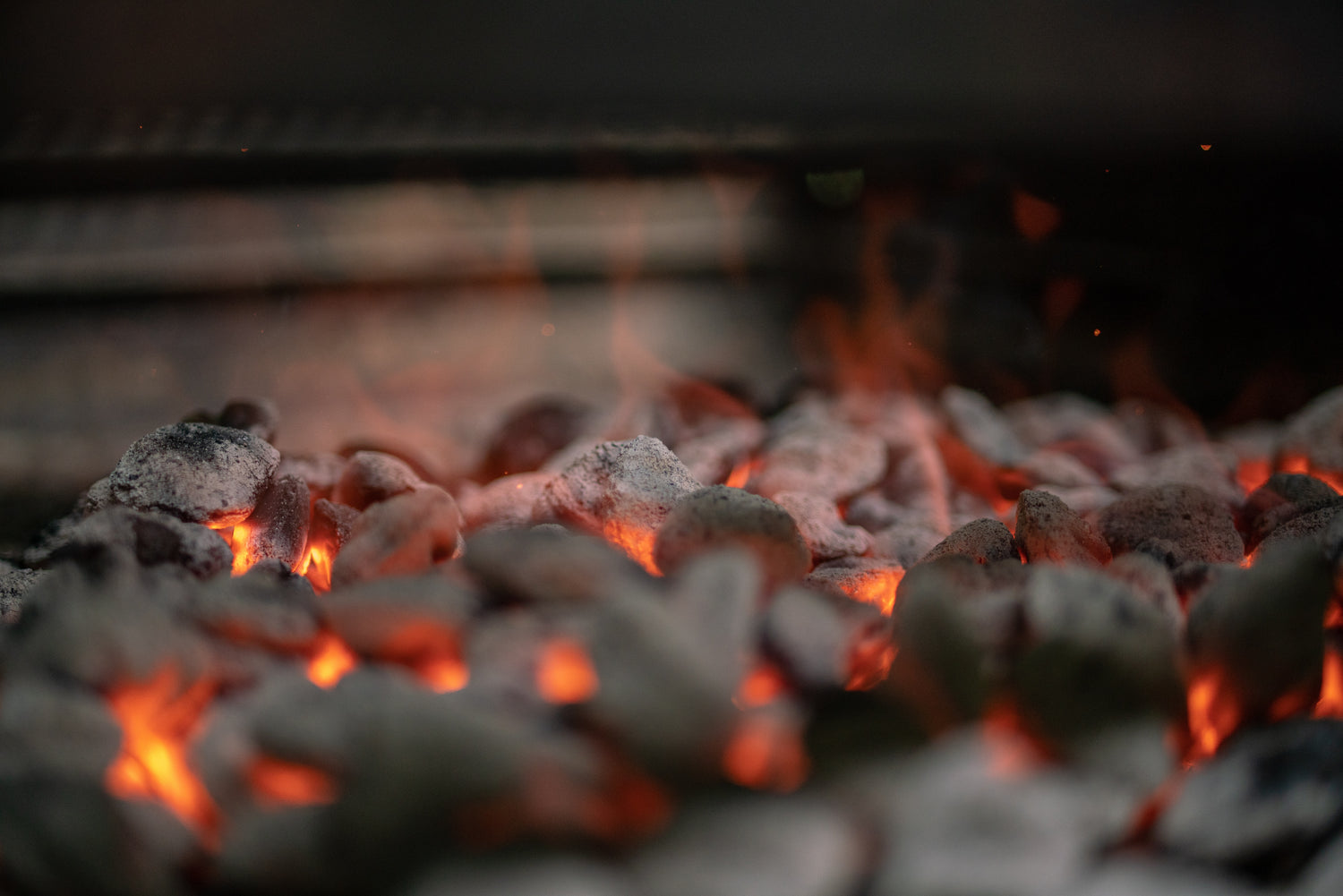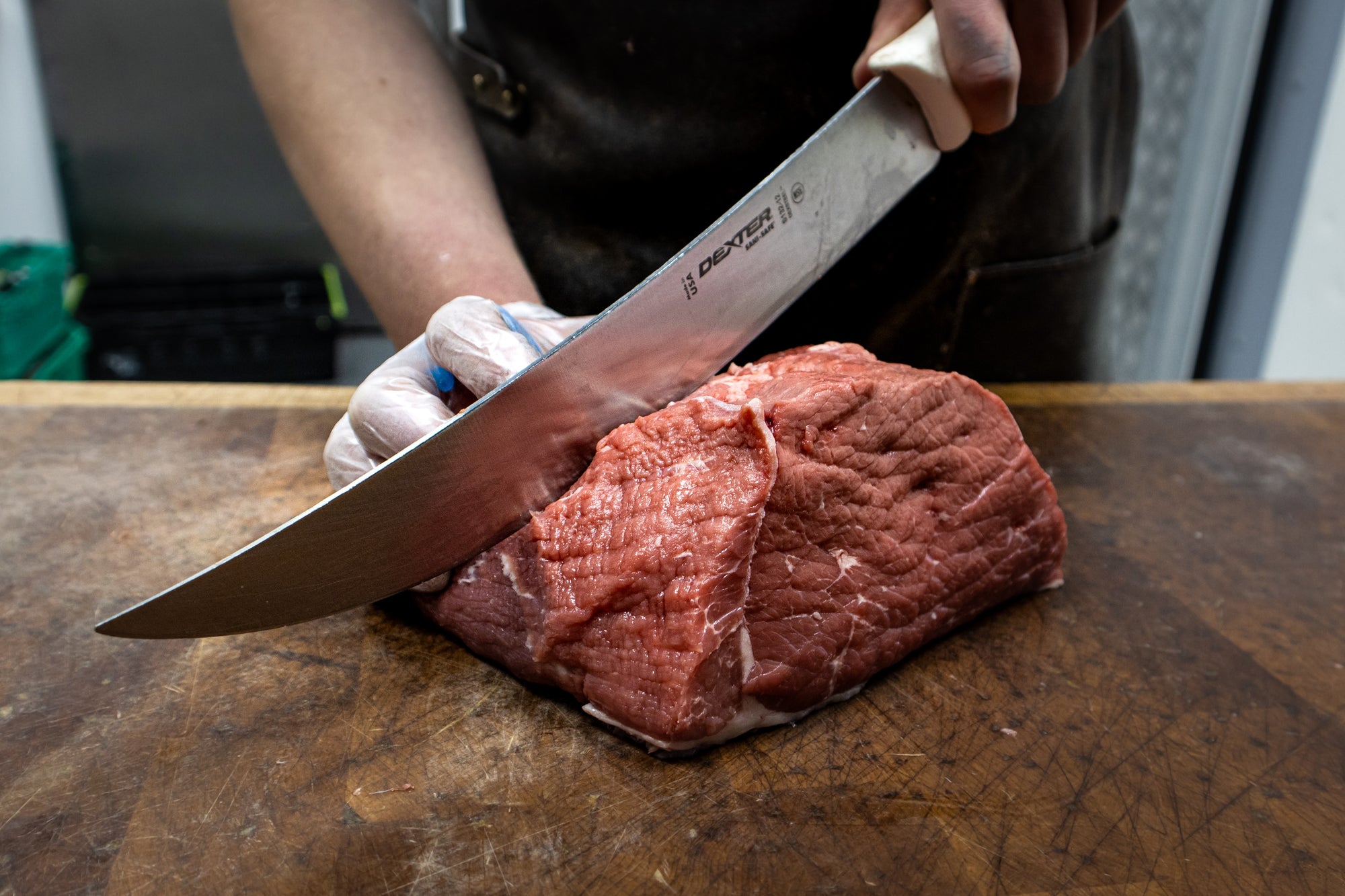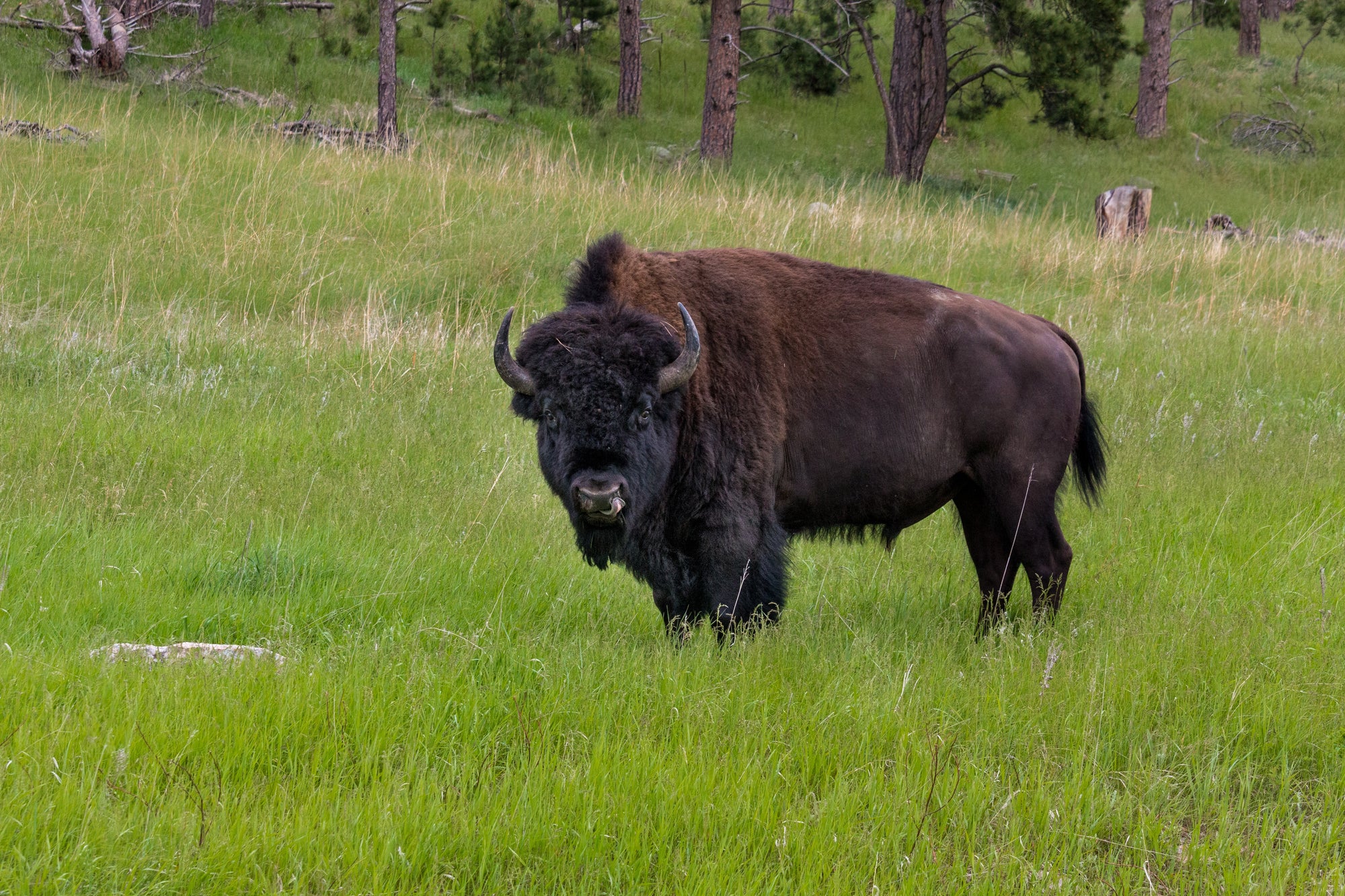Smoking elk, deer, and beef simultaneously presents an enticing culinary adventure. Imagine blending their unique flavors into a single batch of jerky - a true feast for the palate.
However, such an endeavor isn't without its challenges. From meat preparation nuances to equipment constraints, the process demands precision. So, can you smoke elk, deer, and beef all at the same time for jerky?
Absolutely - and with the insights we share below, you’ll feel confident in your abilities by the time you finish reading this guide. Mahogany Smoked Meats brings more than a century of meat smoking experience to the table.
That being said, you can try our premium jerky as a source of inspiration for your own recipes - from beef jerky for sale to elk jerky for sale, fish jerky for sale, boar jerky for sale, and even buffalo jerky for sale. For now, let’s dive into the conversation at hand.
The Appeal of Smoking Elk, Deer, and Beef All at the Same Time for Jerky
Variety is the spice of life - which is why so many individuals wonder whether you can smoke different types of jerky at the same time. There are two reasons this is a smart approach to bulk jerky smoking: flavor and productivity.
Unique Flavor Profiles
The allure of simultaneously smoking elk, deer, and beef for jerky lies in the symphony of flavors each meat brings to the table.
- Elk is known for its lean profile and slightly sweet undertone. It offers a distinct gamey yet refined taste.
- Deer, or venison, introduces a bolder, earthier flavor, reminiscent of the wilderness it roams in.
- Beef, a classic in the jerky world, provides a familiar, rich, and hearty base that complements its wilder counterparts.
When smoked together, these meats merge to create a jerky experience that is not just a snack, but a journey through diverse landscapes of taste.
This harmonious blend captures the essence of traditional jerky while introducing a gourmet twist, appealing to both jerky aficionados and adventurous eaters alike.
Saving Time With Enhanced Productivity
Traditionally, smoking meats is a time-intensive process, often done separately to cater to each meat's unique requirements. However, by smoking elk, deer, and beef in one go, you effectively streamline your smoking process.
This approach not only saves time but also enhances productivity, especially beneficial for those who prepare jerky in larger quantities, whether for family gatherings or commercial purposes.
It's a practical solution that doesn’t compromise on quality - each meat still receives the attention it deserves from the smoker.
By understanding and adjusting to the nuances of each meat type, you can ensure that all three reach their flavor peak simultaneously, delivering a batch of jerky that's efficient in preparation and exceptional in taste.
That being said, can you smoke elk, deer, and beef all at the same time for jerky, or will this create more headaches than it's worth?
Can You Smoke Elk, Deer, and Beef All at the Same Time for Jerky?
While it’s certainly possible to smoke elk, deer, and beef all at the same time for jerky, it’s important to set your expectations and be aware of potential challenges along the way. We’ll highlight these below before offering tips on overcoming them.
Meat Preparation Considerations
When preparing elk, deer, and beef for simultaneous smoking, attention to detail is paramount. Each meat type requires specific preparation techniques to optimize its texture and flavor. For instance, trimming excess fat is crucial for beef to prevent overpowering the more subtle flavors of elk and deer.
The slicing thickness must also be consistent across all meats to ensure even smoking. Variations in slicing can lead to uneven drying, affecting both texture and taste. We talk about this more in our guides on how to cut meat for jerky, the best cuts of elk meat, and the best cut for beef jerky specifically.
The marinating process, too, needs a thoughtful approach, as each meat absorbs flavors differently. This stage sets the foundation for how the meats will interact and complement each other during smoking. You need to think carefully about how the deer jerky or beef jerky marinade will play with your elk jerky marinade.
Understanding Different Meat Properties
Elk, deer, and beef differ significantly in their fat content, texture, and how they respond to smoke.
Elk, being leaner, requires careful monitoring to avoid over-drying. Deer, with its distinct gamey flavor, needs to be balanced so as not to overpower the milder elk and the familiar beef. Beef, being more forgiving and robust, acts as a flavor anchor in this trio.
These intrinsic differences dictate how each meat is treated in the smoker, from the duration of smoking to the intensity of the heat and smoke applied. This makes it imperative to carefully consider what temp to dehydrate jerky and how long to dehydrate jerky.
Equipment and Setup Limitations
If you’re going to try this out your smoker needs ample space and adjustable racks to accommodate different meats without overcrowding, which can lead to uneven smoking.
The ability to control and maintain a consistent temperature is vital, as even slight fluctuations can impact the smoking process.
Additionally, the smoker must allow for precise smoke control - too much smoke can overshadow the meats' natural flavors, while too little can result in a lackluster taste.
The Health and Safety Side of Things
Safety is a non-negotiable aspect of smoking meats. Each type of meat has a specific internal temperature that it must reach to be considered safe for consumption. The challenge is achieving these temperatures simultaneously in a single smoker.
Furthermore, cross-contamination is a concern, especially when handling raw meats together. Strict hygiene practices and careful handling are necessary to prevent any health risks associated with improperly smoked meats.
So, Can You Smoke Elk, Deer, and Beef All at the Same Time for Jerky?
All that being said, can you smoke elk, deer, and beef all at the same time for jerky? Definitely - but we just wanted to make sure you’re aware of the challenges in bringing your jerky to life.
Below, we’ll offer tips on smoking multiple meats simultaneously to help you make the most of this culinary adventure and create a delicious array of jerky treats!
Tips on Smoking Multiple Meats at Once to Ensure Perfect Consistency and Flavor
While smoking multiple meats at once can quickly get overwhelming, we are here to simplify the process for you with actionable insights to help you make the most of this experience.
From choosing the best wood for smoking elk jerky to perfecting your beef jerky recipe, there’s a lot to consider!
Selecting the Right Woods for Smoking
The choice of wood is crucial in smoking, as each type imparts a distinct flavor. For a blend of elk, deer, and beef, woods like hickory or oak offer a robust smoke that complements the strong flavors of game meats, while not overpowering the subtler notes of beef.
For a milder touch, fruit woods like apple or cherry can add a hint of sweetness, balancing the gamey taste. The key is to avoid overly resinous woods like pine, which can impart a bitter flavor.
We here at Mahogany Smoked Meats use mahogany, as our name suggests. We’re the only smokehouse in the nation that uses this lumber - and this is a huge reason we’ve earned a reputation as the #1 choice for the best online jerky! It’s super unique and savory.
Marinating and Seasoning Strategies
Whether we’re talking about your elk jerky recipe or fish jerky recipe, buffalo jerky recipe, or anything in between, the marinating and seasoning strategy play a critical role in the final taste and texture of your product.
For elk and deer, consider marinades that mitigate their gamey nature, like those with acidic bases such as vinegar or citrus, combined with herbs like rosemary or thyme. Beef is richer so it can handle bolder flavors like soy sauce or Worcestershire.
When seasoning, a balance of salt, pepper, and a touch of sweetness can unify the flavors. Avoid overpowering any single meat - the goal is a harmonious blend.
Balancing Smoke Intensity and Duration
Different meats absorb smoke at varying rates. Elk and deer, being leaner, can become overly smoky quickly. Beef can endure longer smoking times.
To balance this, start smoking beef first, introducing elk and deer later in the process. This staggered approach ensures each meat receives the right amount of smoke without one dominating the flavor profile.
Temperature Control and Monitoring
Maintaining a consistent temperature is vital for even smoking. Aim for a low and slow approach, typically around 200-225°F. Use a reliable thermometer to monitor the smoker’s internal temperature.
Fluctuations can cause uneven cooking and drying, affecting texture and taste. Regular monitoring helps in making timely adjustments, ensuring each meat reaches its ideal internal temperature.
Managing Meat Placement and Rotation
Placement within the smoker affects how meats cook.
Position meats that require more smoke and heat (like beef) closer to the smoke source, while placing leaner meats (elk, deer) on higher racks where the smoke is less intense.
Rotate the meats periodically to promote even exposure to smoke and heat.
Moisture Control and Ventilation
Adequate ventilation is essential in a smoker, as it controls humidity and smoke density.
Too much moisture can hinder the formation of a proper bark on the jerky, while too little can dry out the meats prematurely. Adjust vents to maintain a balance, ensuring a steady stream of smoke and adequate air circulation.
Taste Testing and Adjustments
Taste testing during the smoking process is crucial. It allows you to gauge the development of flavors and make real-time adjustments.
This might mean tweaking the smoke, adjusting the heat, or even repositioning the meats. Trust your palate, and don’t hesitate to make changes as needed.
Resting and Storing Smoked Jerky
Resting the jerky after smoking it is important for flavor development. Let it rest at room temperature for a few hours, allowing the flavors to meld and stabilize.
You may be wondering…does beef jerky go bad? And if so, how long does beef jerky last? We’ve addressed these questions and many others in our blog. Gain tips on storing beef jerky short term or freezing beef jerky for the long haul to avoid expired beef jerky. Many of these tips apply to deer and elk jerky as well.
You can also learn about jerky in general in our blog. We have resources on topics like smoked jerky vs dehydrated jerky, the healthiest jerky you can buy, our favorite beef jerky alternative, elk nutrition facts, beef jerky calories, beef jerky protein, beef jerky for weight loss, and more.
At this point, though, it’s time to bring this conversation to a close and leave you to it - you’ve got a lot of work ahead of you if you’re going to smoke elk, deer, and beef all at the same time for jerky!
Final Thoughts on Smoking Elk, Deer, and Beef All at the Same Time for Jerky
So, can you smoke elk, deer, and beef all at the same time for jerky? Now that you have the right approach, absolutely!
This offers a delightful fusion of flavors and an efficient use of time, despite the challenges in preparation, temperature control, and seasoning. With the right techniques, from wood selection to moisture management, you can master this art and enjoy a uniquely satisfying jerky.
For those inspired to embark on this smoking adventure, or simply to savor the fruits of expert craftsmanship, visit Mahogany Smoked Meats to explore our premium selection and start your own flavorful journey.
Whether you’re looking for the basics or something more obscure like the best fish jerky, Mahogany Smoked Meats has something delicious waiting to be discovered.





